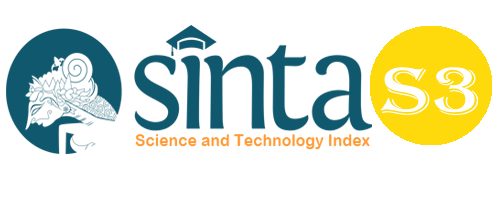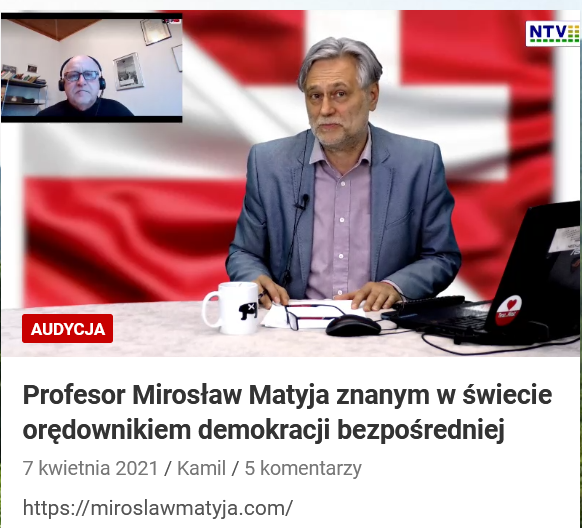Collaborative Governance in the Regency Development Plan (Study in Tangerang District, Banten Provincy, 2021)
Abstract
The Regional Government of Tangerang district carries out development through the planning process discussed in the Musrenbang. During the Covid-19 pandemic, budget diversion was prioritized for health care. So that other sectors which are also a priority are not implemented both in quality and quantity. The purpose of this study is to determine the mechanism of the exclusive planning process on the quality of planning, to analyze the differences between exclusivity and inclusivity and to build an inclusive planning model in collaborative governance (CG) as a reflection of equitable development planning and achieve people's welfare. The research method uses the basic theory of Collaborative Governance (CG) by Ansell and Gash in the development planning process. The implementation domains are participatory, inclusiveness, synergy, transparency as measured by commitment, synchronization, control and sanctions in favor of the people, supported by the theory of Government Science and the triple helix's theory. Collecting data by interview method, questionnaires, secondary data and observation. Processing of data with a qualitative approach supported descriptive statistics. This research shows that the government domain is still very dominant, while other actors have low participation and tend to be formal. The synergy of the actors is not optimal. The transparency trail is only accessible to an exclusive group. Thus, commitment is only made by the dominant group, access to control of other actors is closed and not involved when planning changes occur, there are no sanctions, so that the quality of planning does not meet the target. There is no official dialogue forum initiated by the government as a forum for discussing development planning by actors. Based on these conditions, the proposed collaborative governance model is to prepare a forum (dialogue forum) that functions as a participatory implementation of actors to answer problems in the development planning process with a commitment to achieve people's welfare.
Keywords
Full Text:
PDFReferences
Ansell, Chris & Gash, A., 2007, Collaborative Governance in Theory and Practice. Berkeley: University of California.
Ansell, Chris & Gash, A., 2008, Collaborative Governance in Theory and Practice. Berkeley: University of California.
Bagus Nuari Harmawan, dkk (2016). Dengan judul penelitian “Collaborative Governance” dalam Program Pengembangan Nilai Budaya Daerah melalui Banyuwangi Ethno Carnival,
Bara, A., et.al. (2021). The Effectiveness of Advertising Marketing in Print Media during the Covid 19 Pandemic in the Mandailing Natal Region. Budapest International Research and Critics Institute-Journal (BIRCI-Journal) Vol 4 (1): 879-886.
Boon Siong Neo dan Geraldine Chen.2007. Dynamic Governance: Embedding Culture, Capabilities and Change in Singapore. SSRN Electronic Journal DOI: 10.2139/ssrn.1477817.
Budi, S., 2012, Birokrasi dalam Perspektif Politik dan Administrasi. Bandung: Penerbit Nusa.
Choi, T & Robertson, P., 2010, Caucuses in Collaborative Governance: The Modeling for an Emerging Era. Public Administration Review, 70(s1), 89– 99.
Creswell, J., 2007, Qualitative Inquiry & Research Design: Choosing among five approaches (2nd ed.). California: SAGE.
Doni, D., Yogia, M. A., Zainal, M. D. W., Ayu, A., & Purwati, M. L. H. (2021). Effect of Management of Market Levies Management on Trader Satisfaction.
Dwiyanto, Agus (Editor), 2008, Mewujudkan Good Governance Melalui Pelayanan Publik. Gadjah Mada University Press. Jogjakarta.
Edwards, Michael, 2004, Civil Society. Polity Press, Cambridge.UK (p.2)
Edy, S., 2007, Budaya Organisasi. Jakarta: Kencana Prenada Media Group.
Effendy, Khasan, 2010, Sosiologi Pemerintahan. Bandung: CV Indra Prahasta.
Emerson, K. Nabatchi, T., & Balogh, S. 2012. An Integrative Framework for Collaborative governance. Journal of Public Administration Research and Theory, 22 (1): 1-29.
Engel, Eduardo; Fischer, Ronald; Galetovic, A., 2014, The Economics of Public Private Partnerships: A Basic Guide. Cambridge: Cambridge University Press.
Ginting, A. H., & Zainal, Z. (2020). Strategi Pemerintah Dalam Pengembangan Objek Wisata Alam Teluk Jering Kabupaten Kampar. Jurnal Ilmiah Wahana Bhakti Praja, 10(1), 211-219.
Hamdi, M., 2014, Kebijakan Publik: Proses, Analisis, dan Partisipasi. Ghalia Indah.
Harmawan, Bagus Nuari dkk. 2016, “Collaborative Governance” dalam Program Pengembangan Nilai Budaya Daerah melalui Banyuwangi Ethno Carnival. Banyuwangi.
Horas M. Panjaitan, 2019, Tata Kelola Kolaboratif Penanganan Sampah di Provinsi DKI
Isabelle My Hanh Derungs, 2010, Trans-Cultural Leadership for Transformation. Lucerne University of Applied Sciences and Arts. Palgrave Macmillan in the US is a division of St Martin’s Press LLC, New York
Islamy, S., 2018, Collaborative Governance Konsep dan Aplikasi. Yogyakarta: Depublish.
John Mc Charty, 2007, Parnership, Collaborative Planning and Urban Regeneration (Urban and Regional Planning), Amazon book.
Labolo, M., 2006, Memahami Ilmu Pemerintahan: Suatu Kajian, Teori, Konsep, dan Pengembangannya. Jakarta: Raja Grafindo Persada.
Mah, D. N.-y. & Hills, P., 2012, Collaborative Governance for Sustainable Development: Wind Resource Assessment in Xinjiang and Guangdong Provinces, China. Sustainable Development Sust. Dev. 20, Issue I0.I002/sd.466, hlm. 85-97.
McCarthy, John, 2007, Partnership, Collaborative Planning and Urban Regeneration. Heriot-Watt University, UK
Morse, Ricardo S; Stephens, J.B., 2012, Teaching Collaborative Governance: Phases, Competencies, and Case-Based Learning. Journal of Public Affairs Education, 565–583.
Mulyadi, Urai Willy, 2018, Pembentukan Kebijakan Partisipatif Dalam Perspektif Pemerintahan Kolaboratif di Kabupaten Sambas Provinsi Kalimantan Barat.
Ningrum, P.A., Hukom, A., and Adiwijaya, S. (2020). The Potential of Poverty in the City of Palangka Raya: Study SMIs Affected Pandemic Covid 19. Budapest International Research and Critics Institute-Journal (BIRCI-Journal) Vol 3 (3): 1626-1634.
O’Flynn, Janine dan Wanna, John, 2008, Collaborative Governance: A New Era of Public Policy in Australia. The Australian National University (ANU) – E PRESS, Australia.
O’Leary, Rosemary dan Bingham Blumgren, Lisa, 2009, The Collaborative Public Manager. Georgetown University Press, Washington DC.
Osborne, Stephen, 2010, The New Public Governance: Emerging Perspectives on the Theory and Practice of Public Governance. Routledge 2 Park Square Abingdon, Oxon, New York.
Panjaitan, Horas, M., 2019, Tata Kelola Kolaboratif penanganan Sampah di Provinsi DKI Jakarta.
Rauf, R., Zainal, Z., & Maulidiah, S. (2020). The Community Participation Dalam Menjaga Kawasan Hutan Di Provinsi Riau. Kemudi: Jurnal Ilmu Pemerintahan, 5(01), 60-76.
Robertson, Peter J., 2009, An Assessment of Collaborative Governance in a Network for Sustainable Tourism: The Case of Rede Turis, National Public Management Research Conference. Los Angeles, USA: School of Policy, Planning and Development, University of Southern California.
Robbins.P. Stephen, 2010, Organizational Behavior. 9th Edition. New Jersey: Prentice Hall, Inc.
Santoso, Purwo, dkk (ed), 2004, Menembus Ortodoksi Kajian Kebijakan Publik. Fisipol UGM: h.3.
Setiawan, I., 2014, Rekonstruksi Birokrasi Pemerintahan Daerah. Jatinangor: Institut Pemerintahan Dalam Negeri.
Sihombing, E.H., and Nasib. (2020). The Decision of Choosing Course in the Era of Covid 19 through the Telemarketing Program, Personal Selling and College Image. Budapest International Research and Critics Institute-Journal (BIRCI-Journal) Vol 3 (4): 2843-2850.
Sudarmo. 2011. Isu-isu Administrasi Publik Dalam Perspektif Governance. Surakarta: Smart Media
Subhayano, T., Yogia, M. A., Wedayanti, A. A. P. M. D., & Zainal, M. L. H. (2021). Good Governance in Maintaining Peace and Order at Pangkalan Kerinci District, Pelalawan Regency.
Steward, Jenny. 2009, Public Policy Values. Palgrave Macmillan. UK.
Susilo, R.K.D dkk, 2013, Pengembangan Model Co-Management Berbasis Pembelajaran Sosial (Social Learning) Untuk Pencegahan Konflik Pengelolaan Sumberdaya Air Minum Bagi Masyarakat Sekitar Sumber Air Di Kota Batu. Direktorat Penelitian dan Pengabdian Kepada Masyarakat. Universitas Muhammadiyah Malang.
Syaiful, Islamy H. L., 2018, Collaborative Governance (Konsep dan Aplikasi). Sleman: CV Budi Utama.
Sufianti, E., 2014, Kepemimpinan dan Perencanaan Kolaboratif pada Masyarakat Non-Kolaboratif. Perencanaan Wilayah dan Kota, 25(1), 77–95.
Syaiful, Islamy H. Laode, 2018, Collaborative Governance (Konsep dan Aplikasi). Yogyakarta: CV. Budi Utama.
Taliziduhu Ndraha, 2003, Kybernologi (Ilmu Pemerintahan Baru), Bina Aksara.
Tjiptoherijanto.Prijono dan Mandala Manurung. 2017, Paradigma Administrasi Pubblik dan Perkembangannya.PT. Rineka Cipta. Jakarta.
Urai Willy Mulyadi, (2018) Kebijakan Partisipatif Dalam Perspektif Pemerintahan Kolaboratif di Kabupaten Sambas Provinsi Kalimantan Barat
Unaradjan, Dolet, 2000, Pengantar Metode Penelitian Ilmu Sosial, Grasindo Jakarta.
Waskitawati. Diny dkk, 2020, Local Government Response towards a Resilient City Design. Universitas Padjadjaran.
Yogia, T. S. M. A., Wedayanti, A. A. P. M. D., & Zainal, R. P. (2021). Ecological Citizenship Camat and Village Head in Maintaining Peace and Order at Pangkalan Kerinci Sub District Pelalawan Regency.
Zainal, Z. (2018). Intergovernmental Relations Dalam Pemberian Konsesi Hutan Tanaman Industri Di Provinsi Riau. Jurnal Tapis: Jurnal Teropong Aspirasi Politik Islam, 14(2), 92-114.
Zainal, F. N. P. (2021, December). Government Management in Village-Owned Enterprises in Increasing Village Original Income in Kampar District. In ICLSSE 2021: Proceedings of the 3rd International Conference on Law, Social Sciences, and Education, ICLSSE (Vol. 9, p. 169).
Zainal, Z. (2016). Dinamika Kebijakan Pemerintahan Desa Di Indonesia Dari Masa Ke Masa (Studi Tahun 1979-2015). Jurnal Tapis: Jurnal Teropong Aspirasi Politik Islam, 12(1), 19-36.
DOI: https://doi.org/10.33258/birci.v5i1.4585
Article Metrics
Abstract view : 70 timesPDF - 32 times
Refbacks
- There are currently no refbacks.

This work is licensed under a Creative Commons Attribution-ShareAlike 4.0 International License.

This work is licensed under a Creative Commons Attribution-ShareAlike 4.0 International License.

_.gif)

















_.gif)



